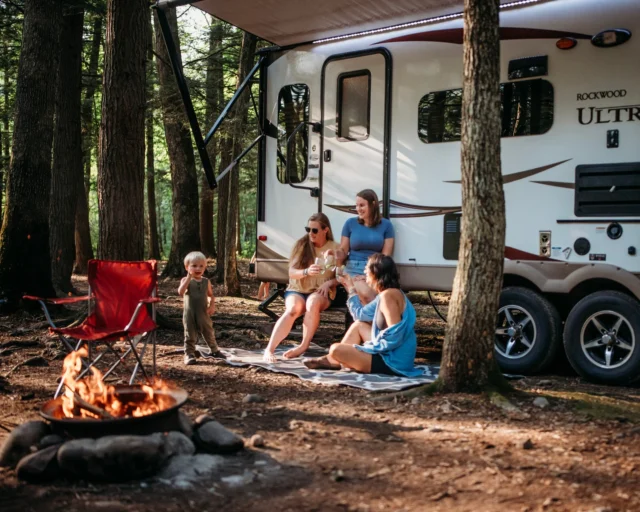
 There’s no doubt about it: living tiny is all the rage these days. From self-built tiny house memoirs to HGTV’s tiny house edition of House Hunters, going small is a big, big deal these days.
There’s no doubt about it: living tiny is all the rage these days. From self-built tiny house memoirs to HGTV’s tiny house edition of House Hunters, going small is a big, big deal these days.
Of course, living in a tiny house may sound appealing to a whole lot of people for a wide variety of reasons. But it can be challenging, too. After all, giving up all that extra living and storage space does mean making some sacrifices — and foregoing privacy, if you live with a partner or family. So why, exactly, is this alternative lifestyle choice continuing to take the world by storm?
Although it does mean giving up some leg room, the advantages of living in a tiny house can far outweigh any drawbacks, depending on your personal goals and lifestyle choices. In this post, we’ll dive into the benefits of tiny house living, so you can get a better sense of what awaits if you’re thinking about making the move yourself — or just to give you something to think about as you enjoy the wide-open spaces of your traditional American home.
Benefits of Living in a Tiny Home
So, what makes tiny homes such a big deal? Here are just a few of the reasons.
1. Tiny homes cost less than traditional homes — usually.

It’s no secret that housing prices have skyrocketed in the U.S. In fact, the latest data shows that the average sale price of a new home in America is a shocking $377,200 — and that figure just gets even more depressing if you live in a super-high-demand market, like New York or San Francisco.
Tiny homes, on the other hand, can usually be built from scratch on the cheap, especially if you’re willing to DIY it and use reclaimed materials. Although this approach takes time and effort, it really pays off as far as your wallet is concerned; some tiny livers have been known to build their homes from the ground up for less than $10,000.
Of course, just as with everything in life, your tiny home experience can be as frugal or as fancy as you choose — and if you want to save your time and energy, there are companies that sell prefabricated tiny homes or build out your custom design for you. These options can range from as little as $5,300 (seriously, this one’s available on Amazon!) to $84,000 and up. Custom builders may also charge for labor by the hour on top of the cost of materials.
Even so, it’s hard to imagine a tiny home that would cost more than $150,000 to build from scratch… and that would be with ultimate luxury options, no holds barred. On the other hand, finding a $150,000 home in any major American metropole is a challenge — unless, of course, you’re the type who’s specifically looking for a fixer-upper.
2. Tiny homes generally carry lower utility bills and maintenance costs.

Although the cost of your home itself is nothing to sneeze at, the real gut-punch to your wallet comes in the form of ongoing expenses, like utilities and maintenance. And it’s just a fact of life: when you have more square footage, you’re going to have higher utility bills, especially if you’re utilizing any kind of climate control.
With an average of 500 square feet or fewer, heating or cooling your tiny home is a breeze — and chances are you won’t be plugging in a gigantic indoor entertainment system setup, either. When you have less room to work with, you naturally create a more simplistic lifestyle, and that kind of lifestyle usually requires less electricity. And a smaller space with fewer appliances means less stuff to go wrong, which translates to a lower overall maintenance bill.
As far as water is concerned, many tiny homes use composting toilets and other water-saving devices, since they’re generally off the grid. The same goes for gas, although obviously, a bit of that savings on your water bill may be made up for by visits to the laundromat or buying fuel for your outdoor grill.
3. Living tiny forces you to assess your priorities.

When you’ve only got 500 square feet of room to work with, every single item you store has to pull its weight. And that gives you the perfect opportunity to take a page from Marie Kondo’s book (literally) and get serious about your priorities.
While it may seem like a drawback to some, to have to scale back and downsize, many tiny home owners (and minimalists in general) actually cite the experience as being immensely freeing. When you have to make tough choices about what to keep and what to toss, you can start to get a better sense of what really matters to you — and make room to bring more of those things into your life. (Hint: most of them turn out to be experiences, rather than objects.)
4. Tiny home = less room for stuff = less stuff = less spending

Combining the frugality aspect with the simplification aspect, you get one of the biggest benefits of tiny homes: along with creating a simple inroad for carving out a minimalist lifestyle, living in a tiny home also forces you to maintain that choice. After all, even if you decide you *do* want a ton of stuff again, you simply won’t have anywhere to put it!
Living small in this way isn’t just less stressful; it’s also way better for your budget. Just take a second to think of all the stuff you’ve spent money on over the years that you desperately wanted at the time, but which turned out to be a total waste — maybe you lost interest only a few weeks later. Your tiny home will force you to think very carefully before adding any new objects to your life, which can help you save a heap of dough along the way. And since stuff takes petroleum and energy to make, package, and ship, living tiny can also significantly cut down your overall carbon footprint. Talk about a win-win!
5. Tiny living can make traveling easier, if your tiny home is on wheels.

Remember that whole “experiences over things” thing we were talking about? Well, for many people, one of the most prized experiences they can imagine is travel — and living tiny can make it a whole lot easier.
For one thing, many tiny houses are built on wheels, which allows you to pick them up and move them when you’re ready for some new scenery. But even if your tiny house isn’t built onto a trailer foundation, living tiny can still make it easier to get out there and see the world — precisely because it’s so much cheaper than traditional home living.
When you’re not spending your entire paycheck just maintaining your main house, it’s a whole lot easier to save money for your travel fund. And when you do hit the road, you won’t be weighed down by a massive mortgage payment for a property you’re not even spending time in. And, hey, given how popular tiny houses are right now, you could totally rent out your tiny home while you’re jet setting… possibly even right here on RVshare!
Tiny House Pros and Cons
Although living tiny does have a lot of benefits, it’s certainly not for everyone. Making such a dramatic lifestyle change should not be taken lightly, and it’s a good idea to list out both tiny house pros and cons before you make a decision that doesn’t actually suit you.
One great way to get a sense of whether or not tiny living will work with your lifestyle and priorities is to give it a try yourself. There are a few tiny house hotels spread around the country, which allow you to get an authentic taste of the lifestyle… but given how similar RVing is, you could also just take a trip in a rental motorhome or travel trailer!
If you want to get a taste of the RVlife as it’s really lived, the rigs on RVshare can’t be beat. Our trusted owners list RVs of every shape, size, and footprint imaginable, so you won’t be stuck with a plain-jane Class A or Class C straight off the factory floor.
Whether you decide tiny living is right for you forever, or you just enjoy moonlighting on occasion during a weekend RV camping trip, we hope this post has given you some new ideas to consider when it comes to figuring out what matters most to you. Live well!
This post may contain affiliate links.






